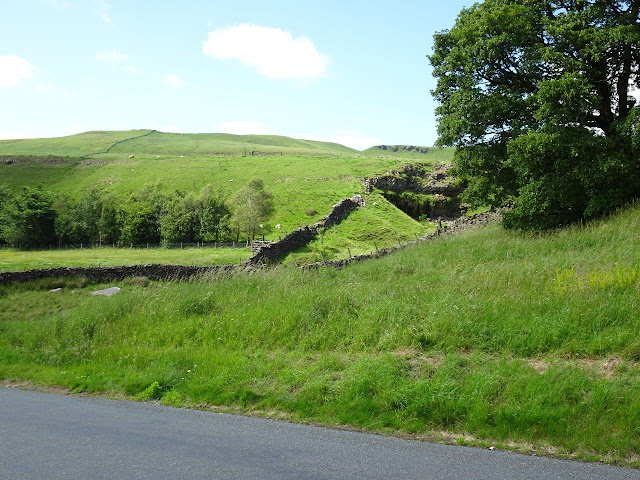Today, I drove to the visitor center near Ayesgarth Falls in the Yorkshire Dales. I have never been in the Dales before, and i wanted to compare them to the North Yorkshire Moors. A quick summary is that the Dales:
- Are more rocky
- Have slightly steeper hills
- Are more fenced-in so almost no sheep on the roadways
- Have trees here and there, though still fairly bare
Both areas primarily have shale and limestone as their bedrock, and this stone was commonly used in both areas for building houses, barns, and fences. Overall, the land has been soggy and peat grew up in the acidic soil, forming deep peat bogs, upon which heather and few other plants grew.
Both areas also have in common that the soil is poor and lacks nutrients to form good farmland, hence the areas have been used for sheep for several centuries. Early farmers, however, learned to farm the valleys, but the higher ground stayed bare and rocky. While there were forests in the valleys where people lived, the sheep became the primary residents of the higher areas, and over several centuries this resulted in a proliferation of mostly those things which sheep do not like to eat! They do occasionally burn the moors to rid it of unwanted and foreign plants.
So, basically sheep have thrived on the moors and made fortunes for people over the centuries, but not much else but sheep can thrive on the higher, more rocky areas. You will see cattle and other farmed crops in the valleys, however, and that is where most of the villages and homes are located.
The drive today was a little better than a couple of days ago, but much rougher than driving in the North Yorkshire Moors for a couple of reasons: 1) roads were not so busy, and 2) there are fewer fences in the moors so it is easier to pull over.
Similar to the moors, the roads today were almost all 4-digit roads.
More trees than the moors.
Finally made it to the visitor center and got parked.
The had bells tied around their ankles and wore knee-length pants with decorative socks. Click on this link to view one of the two videos I took. https://youtu.be/OlR7sQ45bfU
These are also Morris Dancers, but with costumes festooned with ribbons.
Tomorrow, I head to Chester in Wales.



















































